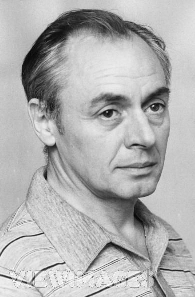by Philip Dore

'The requirement of the present, the failure of the past, is the same:
to provide a thoroughly self-conscious and self-critical human account
of man.'
The Politics of Experience
These pages are intended as a forum for the ideas of Ronald David Laing,
one of the most controversial figures of 20th Century psychology and
philosophy. His writings - a beguiling mix of psychoanalysis, mysticism,
existentialism and left-wing politics - make for powerful and often
disturbing reading; disturbing because they so clearly demonstrate
the
extent to which the average human being is entrapped by the pressures
of
social conformity.
His first book, The Divided Self, was an attempt to explain
schizophrenia by using existentialist philosophy to vividly portray
the
inner world of a schizophrenic, which Laing presented as an attempt
to
live in an unlivable situation. (He had been there.) Later books, Self
and Others
and The Politics of Experience, expand upon this to show how
contemporary culture conspires to rob us of our individuality.
Laing remains a highly enigmatic figure. His work tends to be dismissed
by most psychiatrists; however, droves of mentally ill people insist
that this was a man who truly understood how they felt. Laing
always
insisted that psychotherapists should act as shamans, exorcising the
illness through a process of mutual catharsis. This is particularly
apt,
since, like the archetypal shaman, Laing did not appear to so much
preach a doctrine as live it. His self-destructive tendencies and mood
swings are well documented. In 1989 he died of a heart attack at the
age
of 62, his health ruined by years of depression and alcoholism.
Since Laing refused to view mental illness in biomedical/clinical terms,
he has often been labelled as part of the so-called 'antipsychiatry'
movement, alongside figures such as David Cooper, Thomas Szasz and
Michel Foucault. However, Laing vehemently rejected this label. He
never
tried to deny that mentally ill people are in need of help - he simply
did not believe that conventional psychiatry provided the answer. He
was
especially opposed to the use of lobotomies, ECT and the dehumanising
effects of incarceration in psychiatric hospitals. Perhaps one of the
clearest examples of Laing's approach can be seen by an incident related
in John Clay's book R.D. Laing: A Divided Self.
While still in Chicago, Laing was invited by some doctors to examine
a
young girl diagnosed as schizophrenic. The girl was locked into a padded
cell in a special hospital, and sat there naked. She usually spent
the
whole day rocking to and fro. The doctors asked Laing for his opinion.
What would he do about her? Unexpectedly, Laing stripped off naked
himself and entered her cell. There he sat with her, rocking in time
to
her rythm. After about twenty minutes she started speaking, something
she had not done for several months. The doctors were amazed. 'Did
it
never occur to you to do that?' Laing commented to them later, with
feigned innocence. (pp. 170-171)
The Texts
~ Titled links below will open to a page of commentary, table of
contents and publication details ~
The Divided Self 1960 His first book, an extraordinarily insightful
description of the inner world of a schizophrenic. Considered a seminal
work in the expression of the experiences of the mentally ill.
Self and Others 1961 Laing's second book, an eloquent description
of the
way in which people are shaped and controlled by social forces. The
Self
and Others 1969 A substantially-revised edition, significantly
illustrative of the progression in Laing's thought.
Sanity, Madness, and the Family (with A. Esterson) 1964 A study
of the
relationships between schizophrenics and their families. Some of the
conclusions seem a bit dubious, but this is a must for serious Laing
scholars.
Reason and Violence (with D.G. Cooper) 1964 Subtitled 'A Decade
of
Sartre's Philosophy 1950-1960'. With a foreword by Sartre himself.
Interpersonal Perception (with H. Phillipson and A.R. Lee) 1966
One of
his more structured and scientific works, and unfortunately among his
least read.
The Politics of Experience and The Bird of Paradise 1967 A short,
but
incredibly intense book. His most popular work, and an ideal
introduction to his philosophy.
The Politics of the Family 1969 Several essays on the subject.
More
considered than polemic when compared with his earlier material.
Knots 1970 - Psychology written in poetry form. The schematics,
painstaingly designed to express the refractions of meaning in the
dialogues, can be a bit overwhelming for readers unaccustomed to such
forms of notation.
The Facts of Life 1976- 'An Essay in Feelings, Facts, and Fantasy',
this
book examines and questions the implications of life after birth and
pre-birth experience in one's lived life.
Do You Love Me? 1976 - 'An Entertainment in Conversation and
Verse' A
second foray into prose and poetry, somewhat in the style of Knots.
Conversations With Adam and Natasha 1977 - Also published as
Conversations With Children, this is a book of short bits of daily
life
with his children.
Sonnets 1979
A poetry volume, concluding with a collection of adages, mostly his
own.
The Voice of Experience 1982
Another of his later works that deals heavily with birth and the nature
of
experience.
Wisdom, Madness and Folly 1985 Laing's autobiography, which focuses
on
his early years. Subtitled 'The Making of a Psychotherapist'.
Paroles D'Enfants 1989 Seuil, Paris Conversations with Children
Vol.2.
Not published in England at that time as Ronnie protected Max then,
so
only published in French - TI.
BACK TO THE PSYCHINDEX